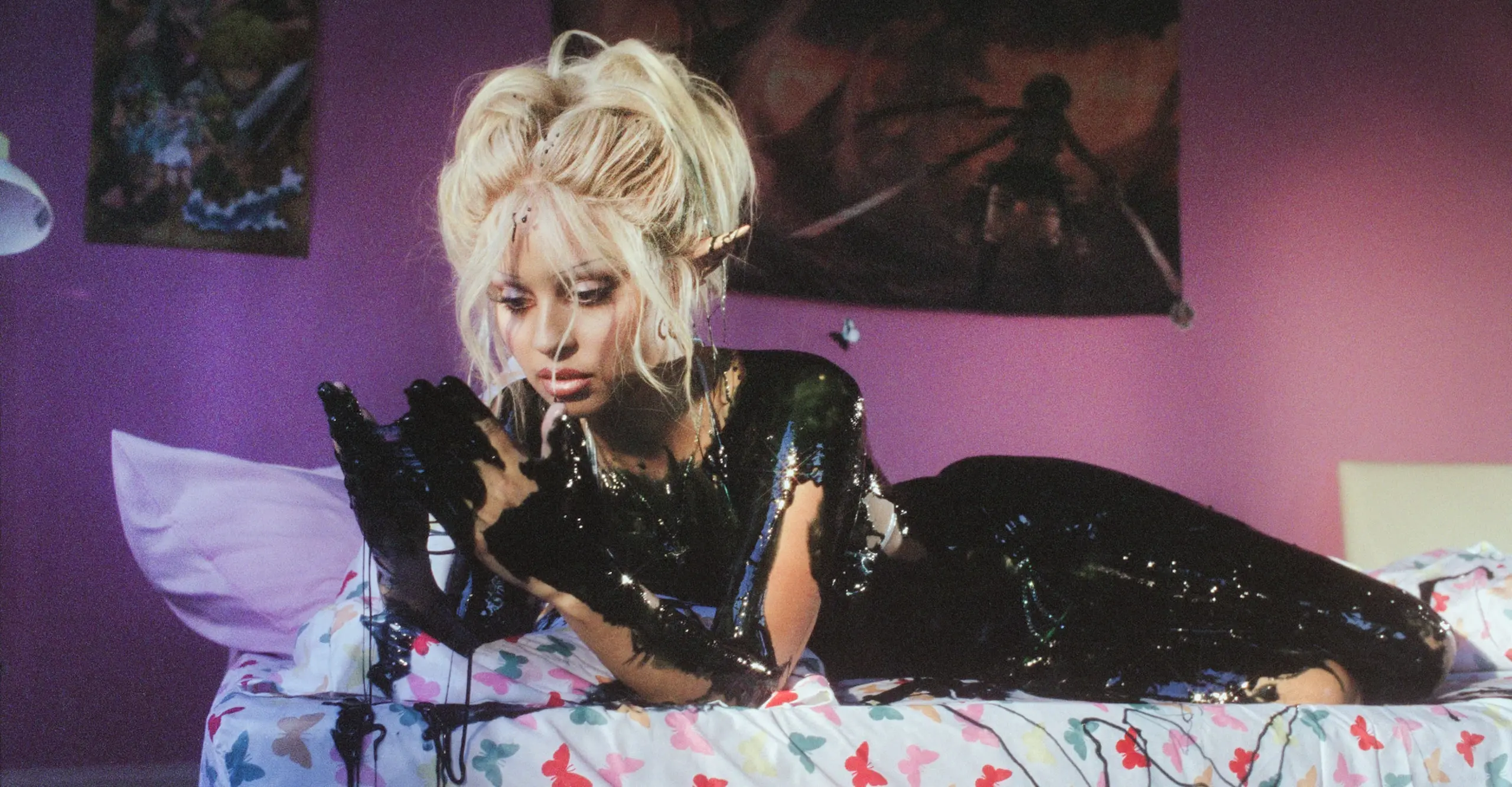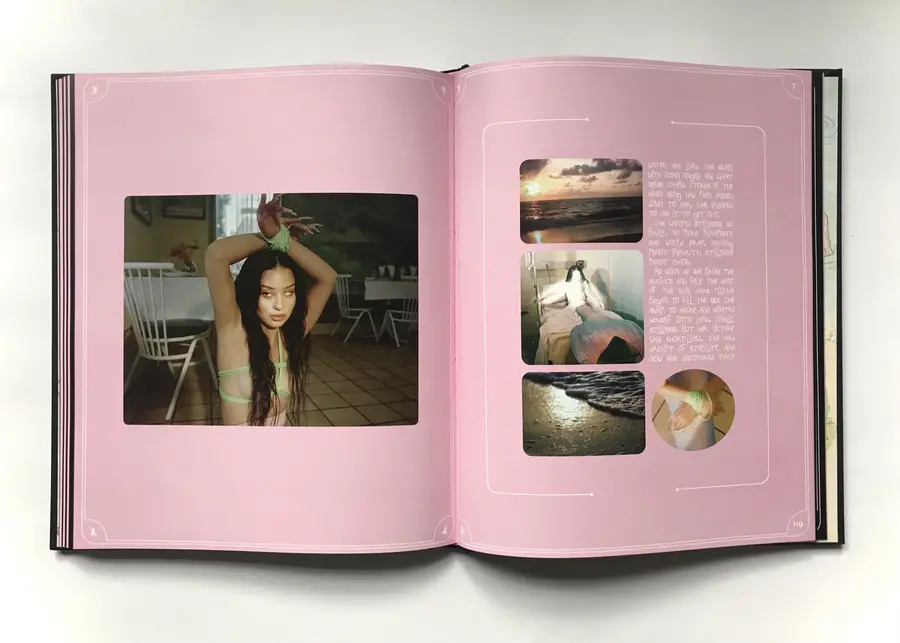Laurie Luna reviews Fairy Tales by Petra Collins and Alexa Demie
I am a self-proclaimed cyber-fairy and lover of both Petra Collins and Alexa Demie’s work. The Fairy Talesphotography book was highly anticipated by fans, imitated by artists before its release, and sits in the niche TikTok subcultures of fairy-core, dark feminine energy and the reclaiming of hyper-feminine aesthetics. This collaboration sees Alexa Demie embody empowered femme mythical beings in a world like ours today.
Pre-release, it had already been solidified in pop-culture history with content creators mimicking the ethereal style on social media. By the time of its release, my feed had already been flooded with dystopian elven imitations. It was lockdown 2020, fairy-core was thriving, providing escapism and a creative outlet. Users explored the darker sides of fairy life, entrapment, loneliness and survival. In 2021, the Fairy Tales photo teasers featured almost empty diners, bedrooms and hospitals; readers blending fact and fiction could imagine these scenarios coming to life in front of them.
Retelling childhood stories, Petra Collins and Alexa Demie play with juxtaposition: dark and light, violence and kindness, delicacy and tension. The soft focus and dreamy photography depict the truthful chaos and survival of mythical beings in a mortal world. The soft padding of the pillow-like book encases dark nightmares and escapist fantasies. Featuring illustrations by Evita Flores, deceivingly innocent, coloured-pencil drawings show butterflies in trees, witches and flying mice, a cottage in flames, and rope-wrapped mermaids accepting their fate.
Demie, though, is floating fairy-like, held by those ropes, the opposite of forced constraint. The rope is intricately tied, more like shibari/kinbaku-bi than bondage. The ropes’ end is hidden, perhaps signifying her autonomy and freedom. This trope recurs throughout the book, challenging ideas of empowerment and restriction, symbolic of the patriarchy and our power to repurpose oppressive devices.
The handwritten text is harder to follow; I’d recommend treating them as poems and re-reading the book to grasp the intensity of the stories told. The text brings new meanings to the images, plunging us into the reality of a fetishised existence.
The Siren’s chapter reads, “Why did being alive and being a sexual creature make her a monster?” Demie represents womxn through different lenses, all with outcomes of alienation and objectification. Depicting feminine mythical creatures is challenging when historically, they have been the sexualised symbol of male violence and desire. Womxnhood becomes a metaphor, told through the darkness of fairy tales.
This book is for lovers of dystopian tales, for anyone interested in modern interpretations of folklore, femxle representation and hyperfeminine aesthetics. I think this book is a great signifier of the zeitgeist and the challenges womxn face today, particularly on social media and image-based communications.
Fairy Tales (2021) by Petra Collins is published by Rizzoli

